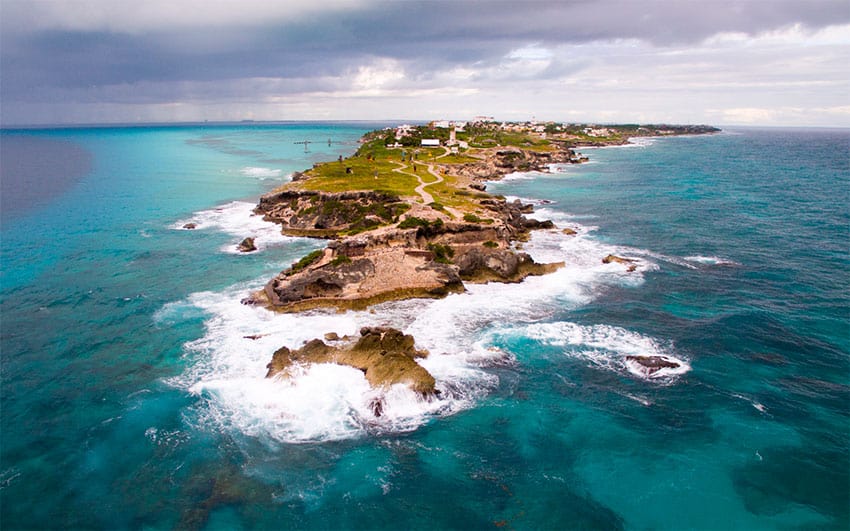Maya moon goddess Ixchel: a benevolent deity with a dark side

One of Mayan mythology’s most important deities is the moon goddess Ixchel, or Ix Chel (pronounced Ishchel). Ixchel’s powers include everything governed by the cycles of the moon — water, fertility, harvests, pregnancy — as well as love and sexuality. She is also the patroness of the arts, textiles, painting, medicine and healing.
The Maya believe in the duality of the universe. Reflecting this duality, Ixchel is benevolent but can also be powerful and destructive. With her power, she can give life; but she can also take it away. She provides both rain for the harvests and medicines for healing, but she is also destructive, sending floods, diseases and curses that can affect the harvests and endanger people’s lives.
The story of Ixchel originated in the Yucatán Peninsula and Guatemala in 1500 B.C. Part of her power comes from controlling the cycles of the moon which govern sowing and harvesting. She is often pictured alongside Chaac (the god of rain) because of their shared association with rain and crops. But she is depicted in many different incarnations.
In some paintings, Ixchel is depicted as a beautiful young maiden accompanied by a rabbit (who has his own place in Mayan mythology and also represents the moon). In other images, she is a woman weaving on a waist loom that represents the thread of life — it symbolizes the umbilical cord and the placenta. At times, she is also portrayed as a fierce older woman emptying a jug of water onto the earth, resulting in storms and devastation that destroys crops and ends lives.
In her role as a “punisher,” Ixchel is shown with symbols of death and destruction around her: a snake wrapped around her neck; her feet transformed into menacing claws and her skirt made of bones that form crosses.
She is also known by several different names, among them are Rainbow Woman (Ixchel), Big Rainbow (Chak Chel), White Moon Lady (Sak U’Ixik), Lady of the First Brush (Ix Chebel Yax) and Goddess of Childbirth (Sinal).

As the moon waxes and wanes, Ixchel changes from a young maiden to an old woman. It is said that with each cycle, she is reborn and allows the maidens (the stars) to fall in love.
Ixchel’s origin myth says that she was weaving on her waist loom one day when she caught the eye of Itzamná (the god of heaven and wisdom who would become her husband). As he is said to reside in the sky, Itzamná is sometimes referred to as the Sun King. According to myth, he’s the son of the creator god Hunab Ku and created the Mayan calendar, as well as the Mayan hieroglyphic writing system.
Together, Ixchel and Itzamná created Bacab — the four deities that hold up the corners of creation.
Their 13 children included Hun Hunahpu (the god of maize), Yum Kaax (the god of wild plants and animals who protected the harvest from predators), Ek Chuah (the god of cocoa and war and the patron of merchants), other sons who were gods of sacrifices and stars, and daughters who were goddesses of water, night and paradise.
Ixchel was such an important goddess that festivities celebrating her role in childbirth and medicine take place in the Mayan “zip” month of Aug. 21 to Sept. 13. She has two important temples: one on the island of Cozumel and one on a high cliff on the southern tip of Isla Mujeres, where it is said you can see a beautiful rainbow. In fact, the island was named Isla Mujeres by the Spanish, who saw all the statues to Ixchel and — not understanding the symbolism — called it the Island of Women.

Historically, Maya women and girls would make a pilgrimage to Ixchel’s temple on Cozumel twice in their lives, leaving in canoes from Puerto de Poló (today the site of the Xcaret theme park and resorts). The first trip took place when a girl’s mother took her to the temple; then, when the girl became a mother, she took her daughter to the temple.
Once there, they would leave offerings of flowers and food and images of the goddess. This ceremony would be accompanied by dancing and singing.
This Mayan sacred journey is still enacted every year on May 26. Beginning at Xcaret, hundreds of Mayan canoes filled with pilgrims cross the Caribbean Sea to the island of Cozumel to visit Ixchel’s temple and receive her blessings.
Uxmal, located 50 miles from Mérida, also has a large temple dedicated to Ixchel: the Pyramid of the Magician, a reference to her magical ability to turn the Sun King’s favor into a bountiful harvest.
According to myth, when Ixchel dies, dragonflies sing over her for 183 days, after which she comes back to life and goes to find her husband in his palace. On the way there, she flirts with his brother Morningstar. Itzamná responds by flying into a jealous rage, and Ixchel hides from him in her Temple of Night. From there, she continues to nurture Earth’s pregnant women.
As the goddess of fertility and childbirth, Ixchel is responsible for the formation of the baby in the womb and decides whether the child will be male or female. To ensure a successful birth, Maya midwives place Ixchel’s image under the birthing bed.

Due to the importance of Ixchel to the Maya — especially to women — the Pueblo del Maíz theme park has organized a festival to celebrate the goddess since 2018. There is also a celebration on the island of Cozumel.
The Walk to Ixchel is held each year on the full moon in June, and consists of a 7-km walk across the island, ending at the effigy of Ixchel, where they leave offerings and sing and dance to the goddess.
Sheryl Losser is a former public relations executive and professional researcher. She spent 45 years in national politics in the United States. She moved to Mazatlán in 2021 and works part-time doing freelance research and writing.
Source: Mexico News Daily

